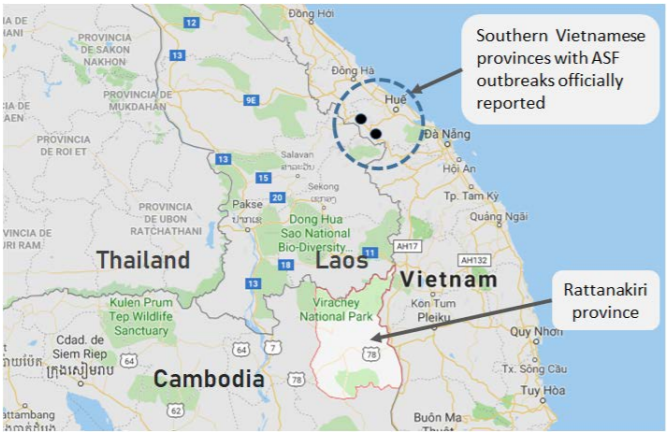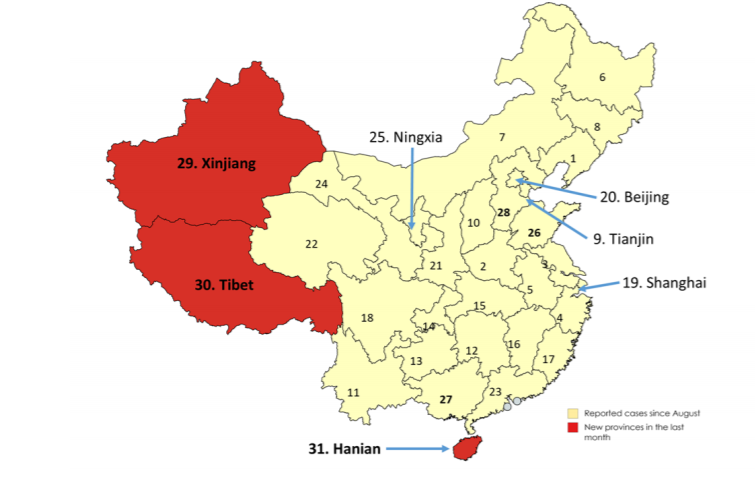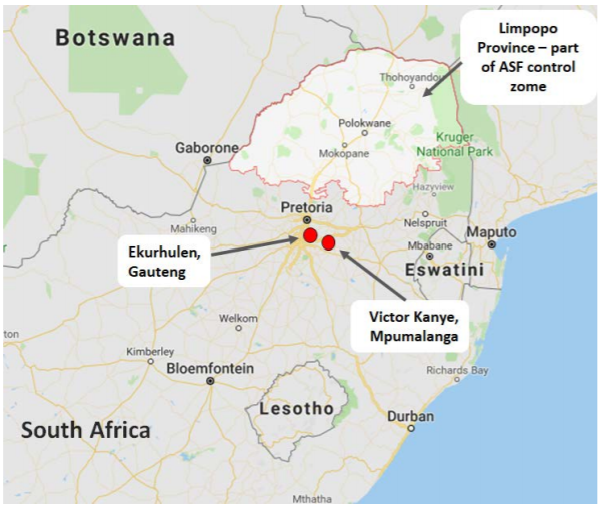



SHIC global disease report: African swine fever around the globe
The Swine Disease Global Surveillance Report provides notes on the epidemic’s progress in Asia and AfricaThe report, which is produced in part with the University of Minnesota and the Swine Health Information Center, elaborates on the confirmed cases of ASF in Vietnam and Cambodia. In Cambodia, the National Animal Health and Production Research Institute (NAHPRI) confirmed the presence of ASF in a swine herd in a rural village. According to the report, most of the pigs in the herd had already succumbed to the disease, but about 100 had to be culled to control the outbreak. Preliminary results from governmental monitoring indicate that the infection could have originated in pork products being sold on motorbikes along Cambodia’s border with Vietnam. The Cambodian Ministry of Agriculture, Forestry and Fisheries (MAFF) immediately instituted control measures to avoid similar situations in the future.

The SHIC suspects that there are higher incidences of ASF in Vietnam than public reports would indicate. They make this assessment due to relatively higher incidences of the disease in Cambodia, but lower than expected levels in Vietnamese provinces that share a border with Cambodia. There will need to be cooperation between international organisations like the UN’s FAO, NGOs, government ministries and private sector organisations to prevent the further spread of the disease. Press releases from those affected by ASF outbreaks indicate that efforts at collaboration will be strengthened, contingency plans will be reviewed and that operational guidelines will be developed to bolster preparedness and responsiveness to the disease. However the Philippines’ agricultural secretary is ready to ban pork imports from Cambodia if cases are detected.
Updates from China
In the past month, three additional provinces in China have reported outbreaks of ASF. This progression indicates that all geographical regions of China have been affected by the disease. Market estimates indicate that 1 million pigs have been culled in response. However, it is possible that 100 million pigs will need to be removed from China’s swine herd in 2019.

After the Beijing International Symposium on ASF, MARA released a communication about a 100 day action plan to manage the transmission of ASF, self-testing system during slaughter and the official veterinarian stationing system at slaughterhouses. In the announcement, Chinese authorities identified the slaughtering process as the primary link between production and marketing of pork. Because of this relationship, it is the ideal place for interventions that could limit virus transmission. The action plan proposed that veterinarians supervise pig slaughterhouses and conduct tests for ASF. It also proposed measures that would allow vets to quarantine animals.
The action plan emphasised that responsibility for implementing these changes would fall to local authorities. Slaughterhouses in China that process between 50,000 to 100,000 animals per year will be self-testing for ASF. Smaller processors are expected to follow suit, with all slaughterhouses conducting self-tests by 1 July. The Chinese government is creating a database of slaughterhouses and aims to create an online system that can issue quarantine certificates. The action plan also outlined efforts to ensuring that clinical tests confirming ASF are reliable and have consistent quality. Though these are ambitious steps, the report still gives local authorities the responsibility to oversee self-testing at slaughterhouses and the technical training of personnel. Local authorities are also responsible for ensuring the accuracy of test results.
Practices on pig farms have also been shifting. On-farm testing kits for ASF are now available. This has made producers more aware of how the virus is introduced to their herds. The testing kits have also given farmers the ability to monitor potential points of entry, and quickly identify instances of the disease. On-site testing is a departure from China’s earlier methods of disease protection. Previously, only a restricted number of labs to conduct tests for ASF. These changes have allowed farms to refine their biosecurity measures, discriminate between sources of feed and quickly respond to disease outbreaks.
The Chinese government has also made a shift towards regionalising its agricultural policy. This has translated into policies that seek to better balance the needs of live production, slaughter capacity and consumer demand when compared to previous provincial systems.
A major focus of China’s ASF action plan centres on efforts to develop a vaccine for the virus. This presents unique challenges, since the vaccine needs to protect pigs against the disease, while also preventing further transmission. As it stands now, potential vaccines are still in their trial stage, and nothing has been commercially released to the public.
Africa: new outbreaks reported
South Africa has detected two new outbreaks of ASF outside of its control zone. Authorities have attributed the outbreaks to contact with wild animals. This comes shortly after an outbreak of foot-and-mouth disease (FMD) in South Africa. That particular outbreak led China, Botswana, Mozambique, Namibia, Eswatini, Zambia and Zimbabwe to suspend imports of pigs and pig products from South Africa. These instances will adversely impact the revenues of South Africa’s livestock industry.

In general, ASF in South Africa has been confined to a northern area of the country; strict control measures have meant that outbreaks have been sporadic. However, there is evidence that warthogs, warthog burrows and species that are hosts to soft ticks are living closer to the boundary line. The authors stressed that provincial surveillance of reservoir and vector species for ASF should be intensified. This should hopefully prevent the spread of ASF beyond South Africa’s control line.
The full report can be read here.







